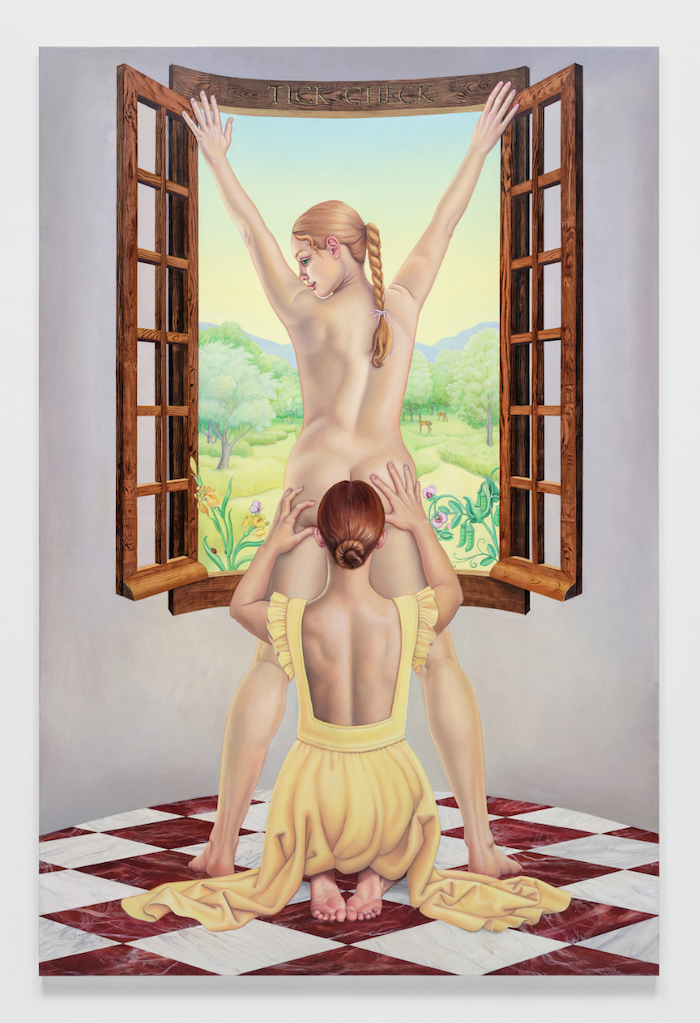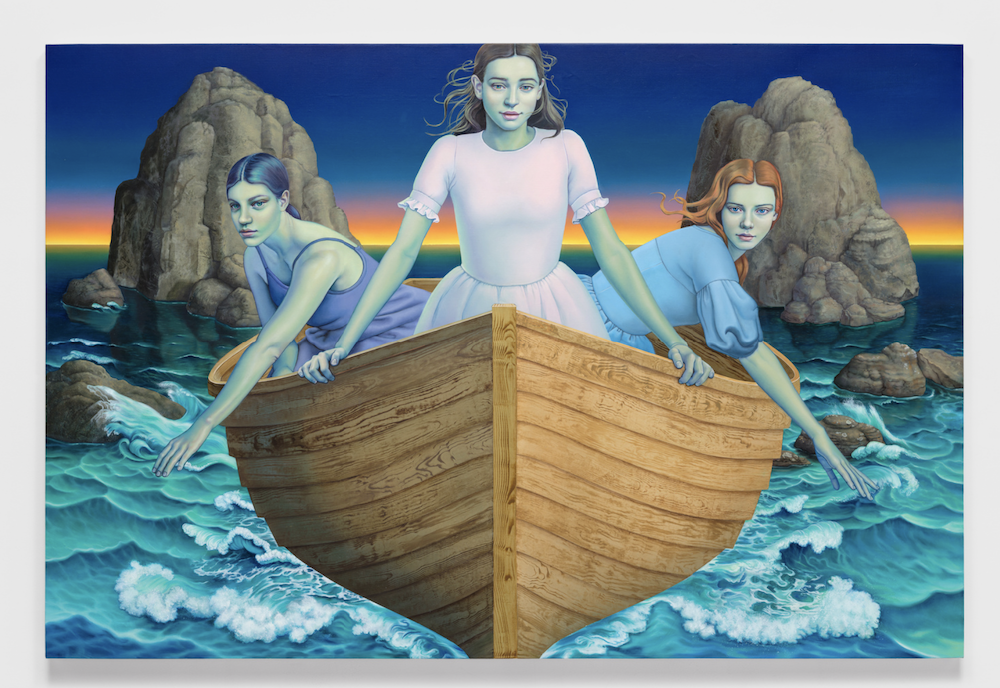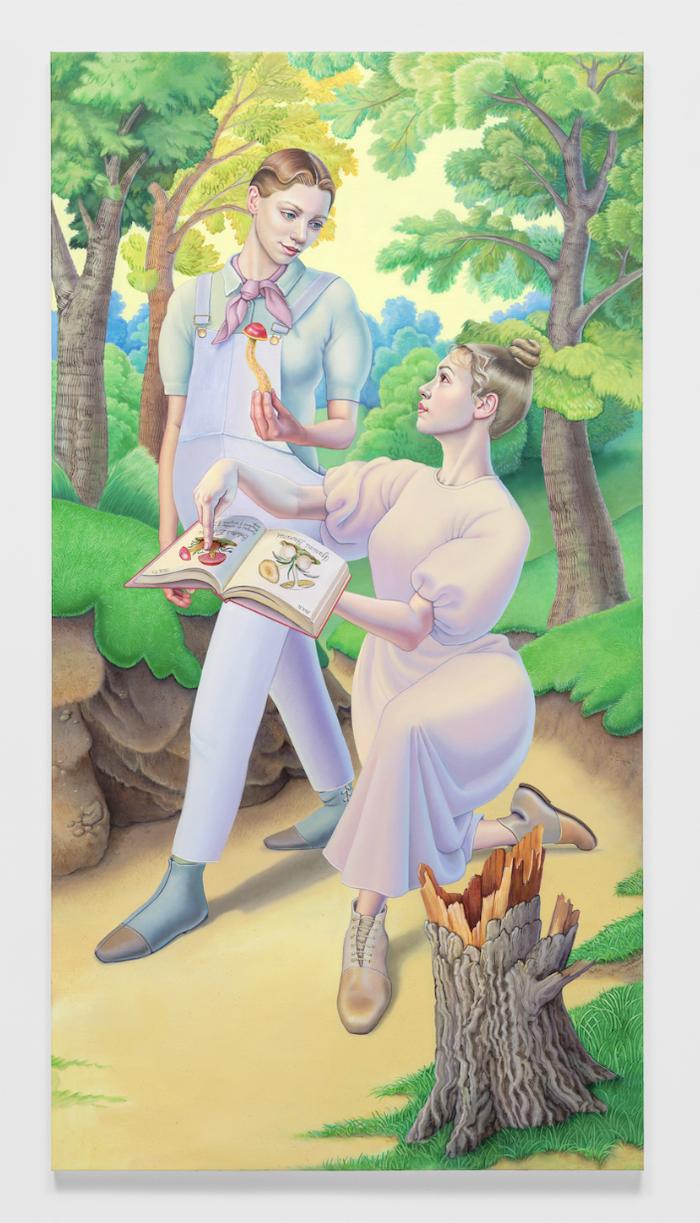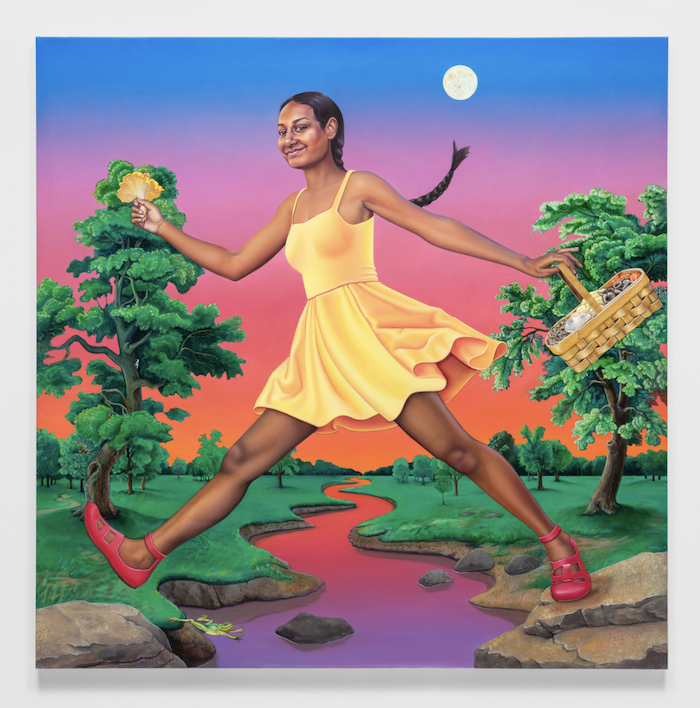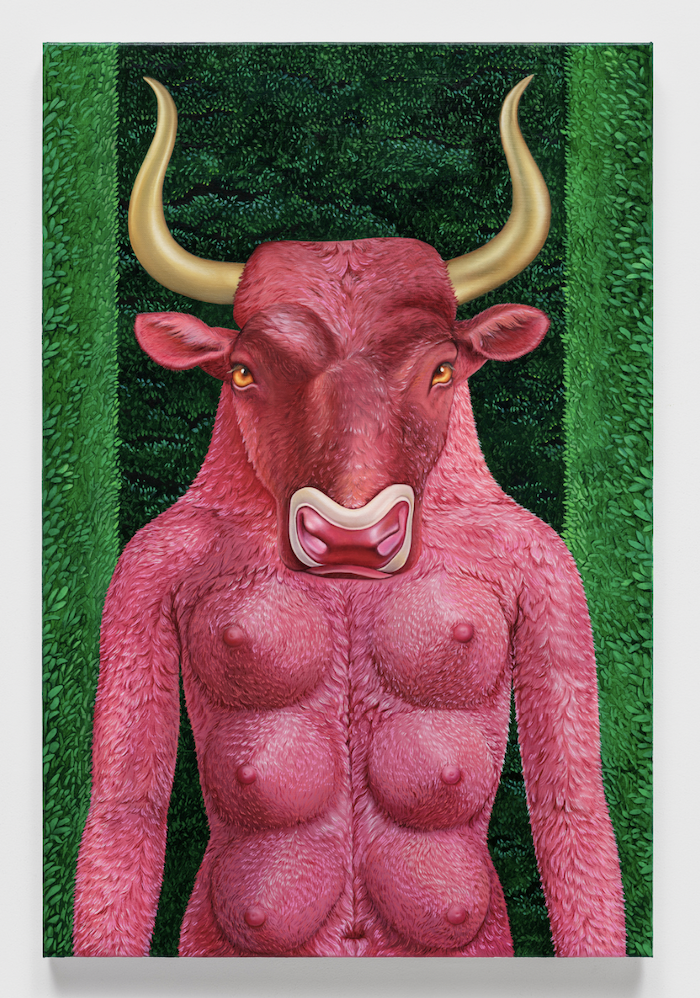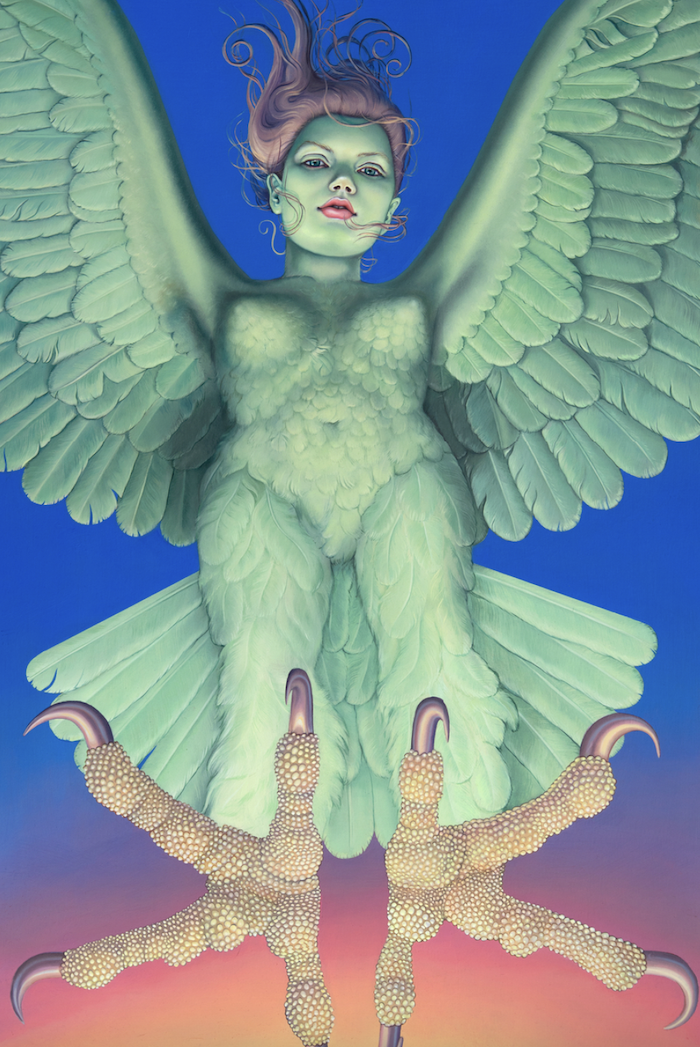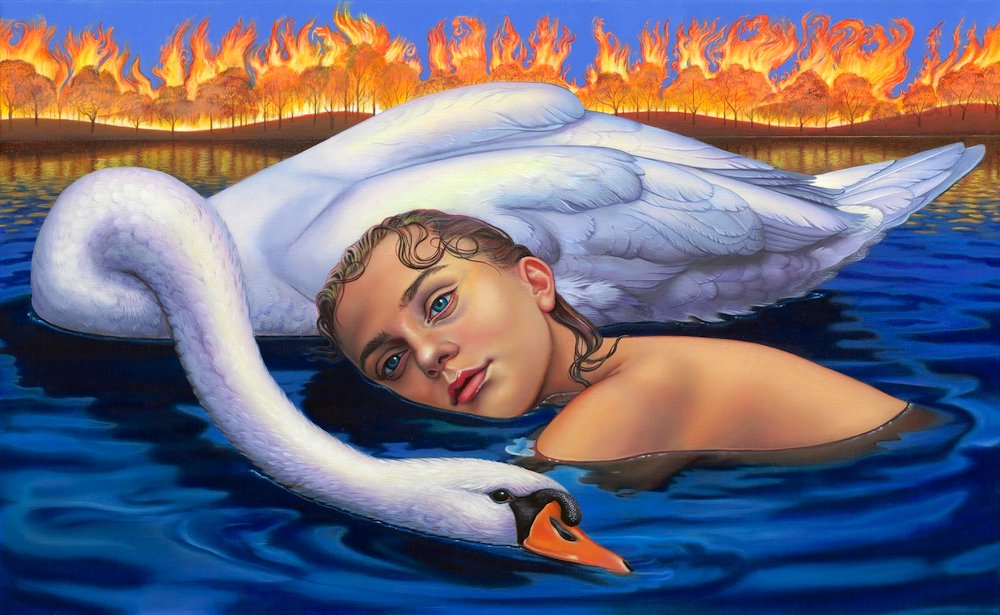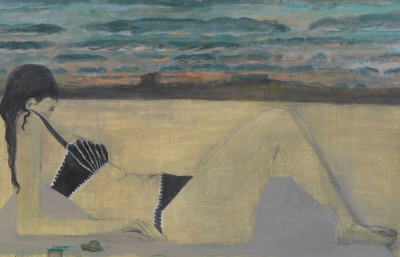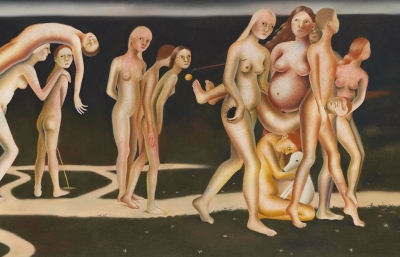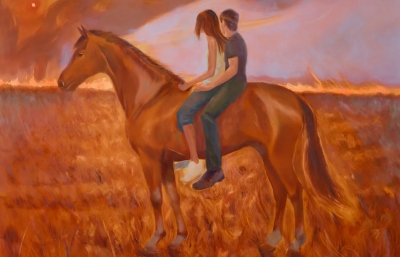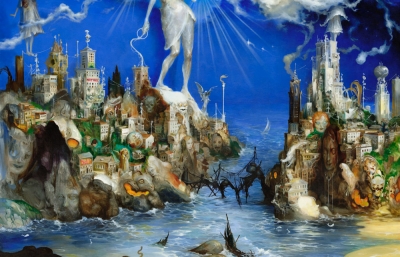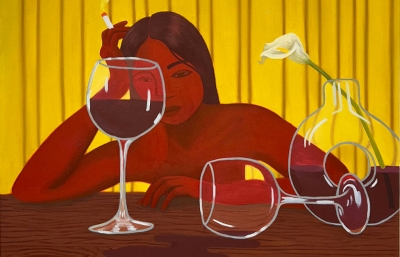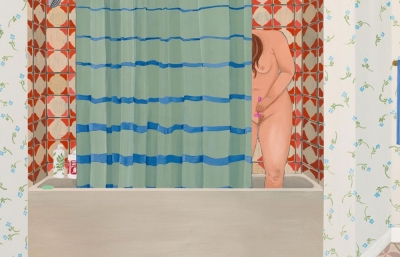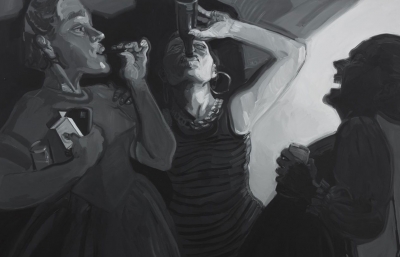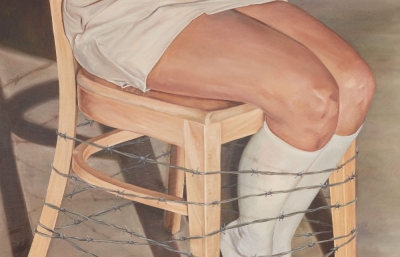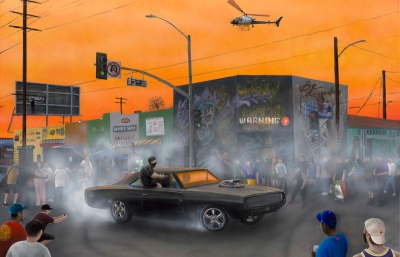1969 Gallery is proud to present Princess Botticelli, Emma Steinkraus’s first solo exhibition at the gallery. Steinkraus’s work is influenced by her research into art history, women’s history, and the flora and fauna of the Shenandoah Valley where she lives. In this incredibly multi-layered exhibition, she repurposes imagery from mythology, the Italian Renaissance and Romanticism to ask questions about femininity and humanity’s destruction of the biosphere.
Stylistically, Princess Botticelli presents all of the familiar elements of a Steinkraus painting saturated colors, confident women, and ecologically-informed landscapes. Painted primarily in oil and acrylic, the paintings are intricately detailed. Steinkraus also takes time to consider the surrounding space in which her works are presented. In contrast to her previous exhibition, Impossible Garden, where the paintings were displayed against a digitally-designed wallpaper depicting images made by pre-twentieth-century women artist-naturalists, the backdrop for these new paintings includes towering pink archways, a playful nod to the architecture of the Renaissance. This sensibility and a cheeky sense of humor also inform many of the paintings, like Tick Check, which features a visual double entendre of a woman suggestively checking another woman for ticks in front of a window overlooking a deer-spotted landscape. Other surprising, provocative moments appear in paintings such as The Harpy and The Minotaur, where mythological tropes are reframed to challenge the male gaze.
Throughout the exhibition, Steinkraus explores the fraught relationship between humans and the nonhuman world. For example, The Swan depicts a sweet and sorrowful moment between a woman and a swan who have found refuge in a river while the nearby forest burns. This painting was originally influenced by the forest fires making headlines in 2020, and remains relevant as we witness the daily effects of climate change today. Similarly, The Unicorn is an associative meditation on the anthropogenic pressures on the environment. Referencing the Unicorn Tapestries at The Met Cloisters, the body of the hunted unicorn is composed using a photo transfer process of collaged images mimicking multiple internet browser windows. The images include Caspar David Friedrich’s famous Romantic-era painting Wanderer above the Sea of Fog, which is recontextualized so that its central figure surveys a contested landscape that includes images of forest fires, falling glaciers, and screenshots from Twitter. Surrounding the unicorn are men with spears, standing in a grassy area filled with many of the spring wildflowers from Steinkraus’s home ecosystem.
Each of Steinkraus’s paintings are the result of a thoughtful exploration of her surrounding world. Through a feminist lens, Steinkraus expertly challenges art historical norms, posing questions about sexuality, humanity, and the more-than-human world.

